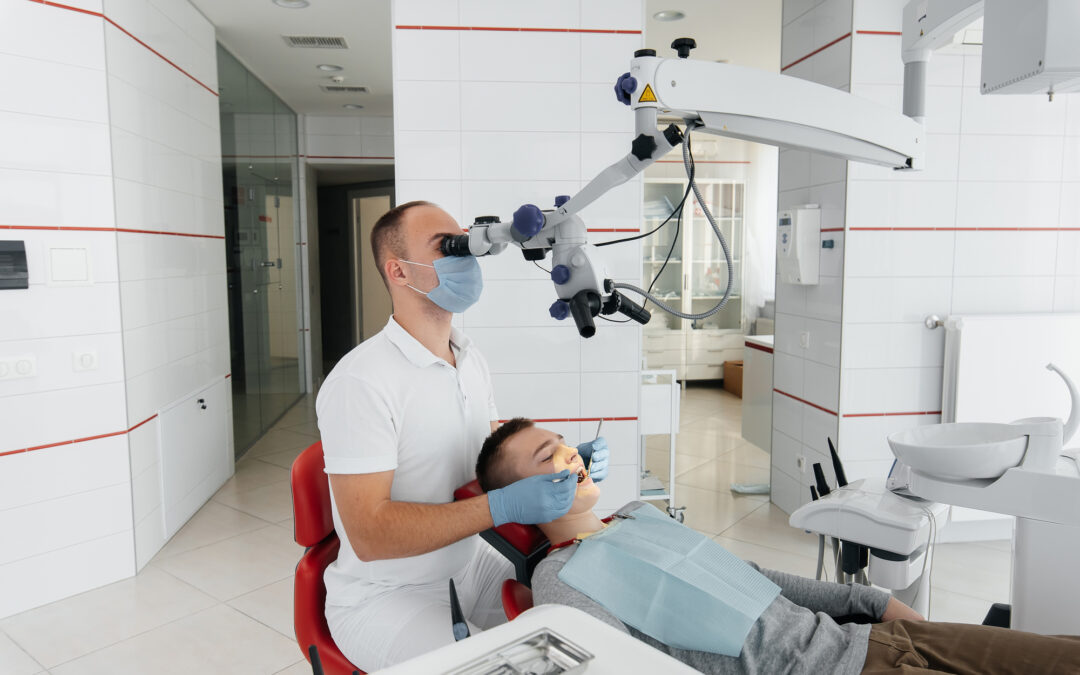Welcome to the fascinating world of orthognathic surgery! If you’ve ever wondered how this specialized branch of dentistry can transform lives and improve oral health, then you’re in for a treat. In this blog post, we’ll dive deep into the realm of orthognathic surgery, exploring its common conditions treated, benefits and risks, the process involved in preparing for surgery, as well as recovery and aftercare. So grab a cup of coffee (or your favorite beverage), sit back, and let’s embark on a journey that will enlighten you about all things orthognathic surgery.
But before we delve further into the specifics of this remarkable procedure, let’s first understand what orthognathic surgery is all about. Orthognathic comes from two Greek words – “ortho” meaning straight or correct; and “gnathos” meaning jaw. As the name suggests, it focuses on correcting irregularities or misalignments in the jaws through surgical intervention. These irregularities can impact not only aesthetics but also vital functions such as chewing, speaking, breathing properly.
Now that we have a basic understanding of what orthognathic surgery entails let’s explore some common conditions that can be effectively treated using this technique.
Common Conditions Treated by Orthognathic Surgery
Orthognathic surgery, also known as corrective jaw surgery, is a procedure that can effectively treat a range of common conditions. This surgical option is often recommended for individuals with severe misalignments or abnormalities in their jaws and facial structures.
One common condition treated by orthognathic surgery is malocclusion, which refers to an improper alignment of the teeth when the jaws are closed. This can lead to difficulties in biting or chewing food, speech impairments, and even breathing problems. By realigning the jaws through surgical intervention, orthognathic surgery can help improve these issues and restore proper function.
Another condition commonly addressed by orthognathic surgery is facial asymmetry. Facial asymmetry occurs when one side of the face appears noticeably different from the other due to unequal growth or development of the facial bones. Orthognathic surgery can correct this imbalance by reshaping and repositioning the affected bones for a more symmetrical appearance.
Furthermore, those suffering from temporomandibular joint (TMJ) disorders may find relief through orthognathic surgery. TMJ disorders occur when there is dysfunction or damage in the jaw joint that connects your lower jaw to your skull. The surgery can correct any structural issues contributing to TMJ disorders and alleviate symptoms such as pain, clicking sounds, and difficulty opening or closing the mouth.
When it comes to obstructive sleep apnea (OSA), orthognathic surgery may be considered as part of a comprehensive treatment plan. OSA occurs when breathing repeatedly stops during sleep due to blockage in the airway caused by tongue position or a narrow throat passage. By repositioning certain structures within the upper airway using orthodontic surgery, while the cost of surgical orthodontics can vary depending on factors such as location and complexity of the case, it is important to consider the long-term benefits when evaluating its worth.
The Benefits and Risks of Orthognathic Surgery
Orthognathic surgery, also known as corrective jaw surgery, is a specialized procedure that can provide numerous benefits for individuals with certain dental and skeletal irregularities. While the decision to undergo orthognathic surgery should not be taken lightly, it is important to understand both the potential advantages and risks associated with this treatment.
One of the primary benefits of orthognathic surgery is improved facial aesthetics. By correcting misalignments in the jaws, this procedure can enhance overall facial harmony and balance. This can result in a more pleasing appearance and boost self-confidence.
In addition to aesthetic improvements, orthognathic surgery can also have functional benefits. Correcting jaw misalignments can improve speech difficulties caused by malocclusions or open bites. It may also alleviate breathing problems related to obstructive sleep apnea or other airway issues.
However, like any surgical procedure, there are risks involved with orthognathic surgery as well. These may include infection at the incision sites, bleeding during or after the procedure, nerve damage leading to temporary or permanent numbness in certain areas of the face, and adverse reactions to anesthesia.
It is essential for patients considering the surgery to thoroughly discuss these potential risks with their oral surgeon before making a final decision. Additionally, it is crucial that patients follow all pre-operative instructions carefully and adhere strictly to post-operative care guidelines provided by their surgeon.
The Process of Preparing for Orthognathic Surgery
The process of preparing for orthognathic surgery is an important step in ensuring a successful outcome. Before undergoing this procedure, it is crucial to have a thorough evaluation by an oral and maxillofacial surgeon who specializes in orthognathic surgery.
During the preparation phase, your surgeon will conduct a comprehensive examination of your facial structure, teeth alignment, and jaw function. This may involve taking X-rays, photographs, and dental impressions to create a detailed treatment plan tailored to your specific needs.
In addition to the physical evaluations, you will also have discussions with your surgeon about the goals and expectations of the surgery. It is essential to communicate openly about any concerns or questions you may have during these consultations.
Once all necessary information has been gathered and discussed, your surgeon will work closely with other members of the healthcare team involved in your care. This could include orthodontists who will help align your teeth before and after surgery or speech therapists who can assist with any speech-related issues post-surgery.
Furthermore, depending on individual circumstances, additional medical tests such as blood work or cardiac clearance may be required prior to scheduling the actual surgical procedure.
Preparing for orthognathic surgery involves not only physical preparations but also emotional readiness. It’s normal to feel anxious or nervous leading up to such a significant procedure; however, having open communication with your healthcare team can help alleviate some of these concerns.
Remember that each patient’s journey towards orthognathic surgery is unique, so it’s important not to compare yourself directly with others’ experiences. Trusting in the expertise of your healthcare professionals while maintaining realistic expectations will contribute greatly toward achieving optimal results from this life-changing procedure!
Recovery and Aftercare Following Orthognathic Surgery
Recovery and aftercare following orthognathic surgery are crucial steps in ensuring a successful outcome. While each patient’s recovery may vary, there are some general guidelines to follow.
Immediately after the surgery, you can expect some swelling and discomfort. This is normal and can be managed with pain medication prescribed by your oral surgeon. Applying ice packs to the affected area can also help reduce swelling.
In the first few days after surgery, it’s important to stick to a soft food diet that won’t put too much strain on your jaw. You may need to avoid foods that require excessive chewing or biting for several weeks.
Taking care of your oral hygiene is essential during this time. Gently brushing your teeth and rinsing with an antiseptic mouthwash will help prevent infection.
During the recovery period, it’s important to attend all follow-up appointments with your oral surgeon. They will monitor your progress and make any necessary adjustments to ensure proper healing.
It’s common for patients to experience difficulty speaking or opening their mouths fully immediately following surgery. However, these issues should gradually improve over time as you heal.
Remember that everyone heals at their own pace, so be patient with yourself during this process. Follow all post-operative instructions provided by your oral surgeon for optimal results.
By taking good care of yourself and following these guidelines, you’ll be well on your way to a smooth recovery from orthognathic surgery!
Summary
Orthognathic surgery, also known as surgical orthodontics, is a specialized procedure that can help correct various conditions related to the alignment and positioning of the jaw. This transformative surgical treatment offers both aesthetic and functional benefits for individuals who may be experiencing difficulties with chewing, speaking, or breathing due to misalignment.
Common conditions treated by orthognathic surgery include malocclusions (misaligned bites), facial asymmetry, temporomandibular joint disorders (TMJ), sleep apnea, and open bite. By addressing these issues through surgical intervention, patients can achieve improved facial harmony and function.
Orthognathic surgery has been shown to have a positive impact on an individual’s quality of life by enhancing their ability to eat comfortably, speak clearly, and feel more confident in their appearance. The cost of surgical orthodontics can vary as global inflation affects dental industry techniques, during-the process stage of preparing for oral maxillofacial surgeries before full recovery, some patients notice significant improvements in their sleep apnea symptoms.
It is crucial for individuals considering orthognathic surgery to undergo a thorough evaluation process before proceeding with the procedure. This includes consultations with oral surgeons and orthodontists who will work together to develop a personalized treatment plan based on each patient’s unique needs. The preoperative phase involves extensive imaging tests such as X-rays, CT scans, and 3D models to accurately assess the skeletal structure of the jaw.
Recovery from orthognathic surgery requires patience and adherence to post-operative instructions provided by your healthcare team. Swelling and discomfort are common during this period but gradually subside over time. A liquid or soft food diet may be recommended initially before progressing back towards regular eating habits. It is essential not only for physical healing but also for maintaining oral hygiene throughout this recovery period.
In conclusion, orthognathic surgery offers a comprehensive solution for individuals seeking correction of jaw-related issues that impact their overall well-being. From improving facial aesthetics to enhancing functional abilities, this surgical approach can make a significant difference in a person’s life. Consultation with a qualified oral surgeon is the first step towards determining if orthognathic surgery is the right option for you.


